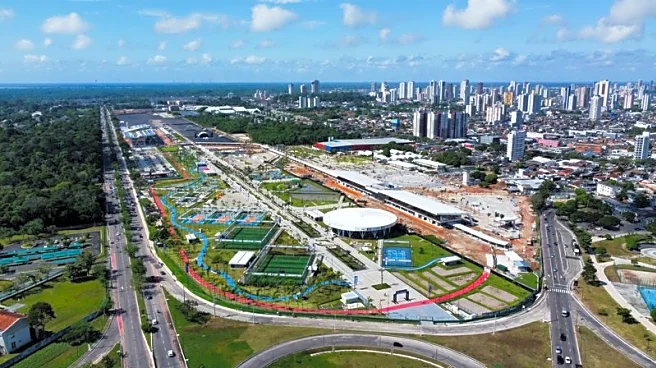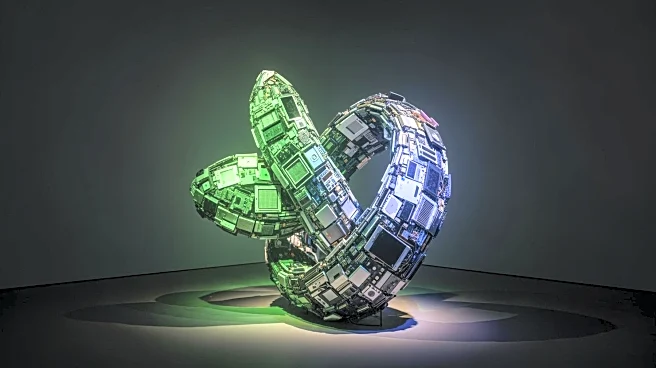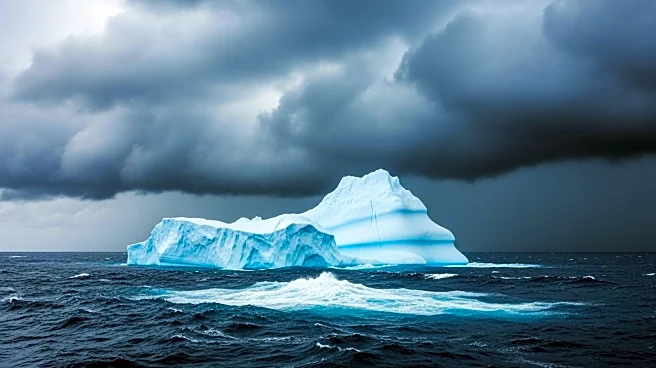What's Happening?
A new exhibit in London is drawing attention to the environmental impact of technology consumption. The exhibit features visualizations of iconic global locations, such as the Giant’s Causeway in Northern Ireland and the Seine River in Paris, depicting
potential future scenarios if climate change continues unchecked. These images are based on climate modeling by Mark Maslin, an earth system science professor at University College London. The exhibit aims to raise awareness about the environmental cost of frequently upgrading tech devices, which contributes to overconsumption, pollution, and climate change.
Why It's Important?
The exhibit underscores the significant role that technology consumption plays in the human-caused climate crisis. As people frequently upgrade their gadgets, they may not realize the environmental impact of their actions. This awareness is crucial as it can influence consumer behavior and policy decisions. By highlighting the potential future damage to iconic locations, the exhibit seeks to provoke thought and action towards more sustainable practices. This is particularly relevant for the U.S., where tech consumption is high and environmental policies are a topic of ongoing debate.
What's Next?
The exhibit could inspire similar initiatives in the U.S., encouraging consumers and policymakers to consider the environmental impact of technology consumption. It may lead to increased advocacy for sustainable tech practices and stricter regulations on electronic waste. Additionally, it could prompt tech companies to innovate towards more eco-friendly products and practices, potentially influencing global standards.
Beyond the Headlines
The exhibit also touches on ethical considerations regarding consumerism and environmental responsibility. It challenges individuals to reflect on their personal consumption habits and the broader societal implications. This could lead to cultural shifts in how technology is perceived and used, fostering a more sustainable approach to innovation and consumption.















